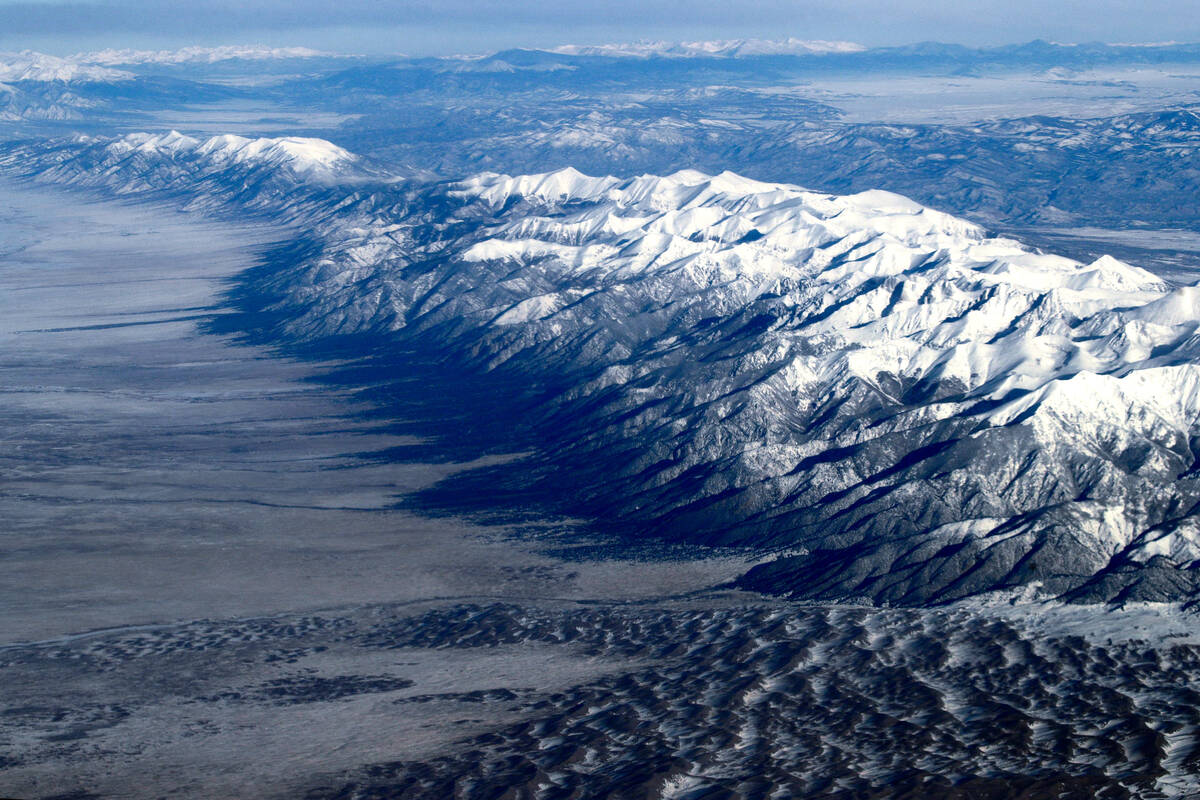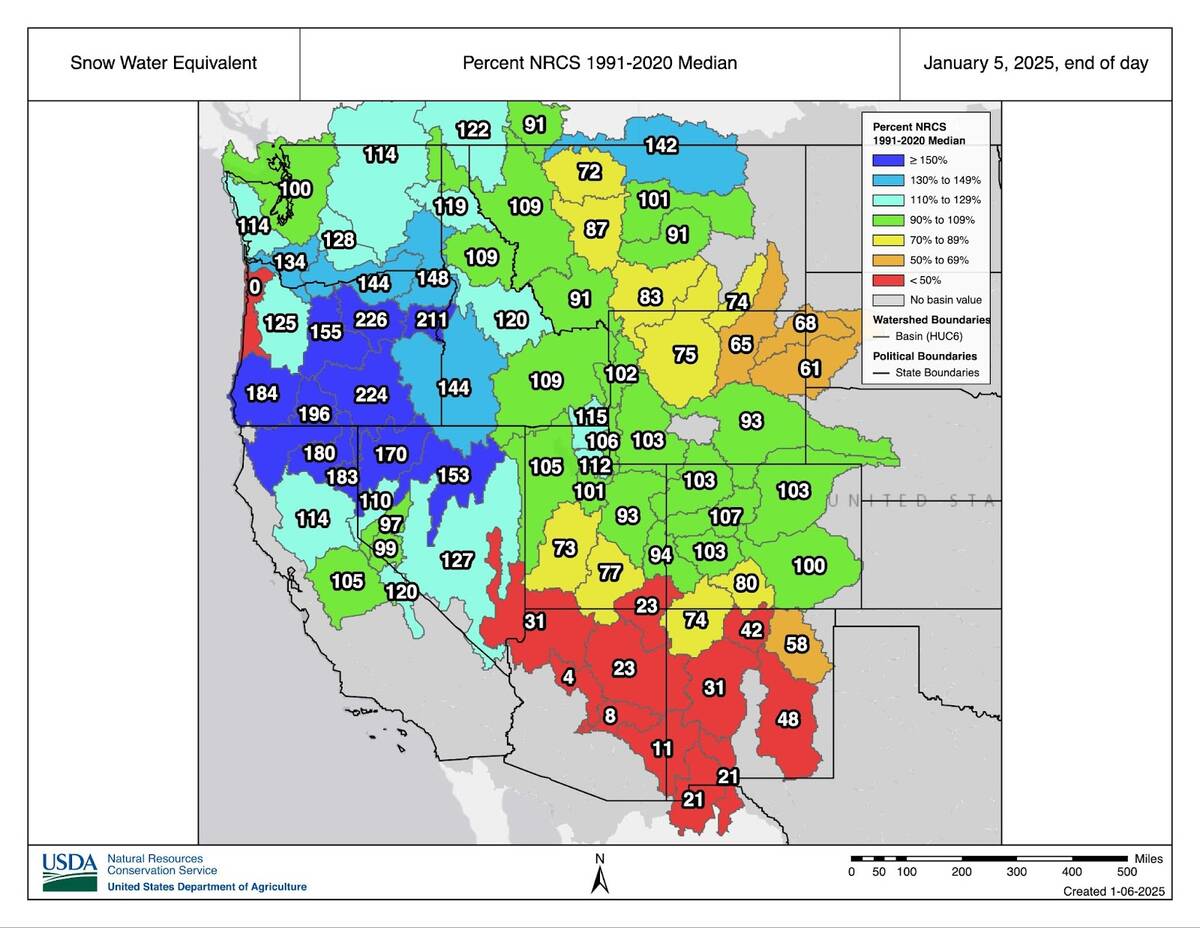Rockies snowpack season for Colorado River basin off to rocky start
It’s too early to make sweeping assessments of this year’s snowpack, but some signs point to a remarkably average year in the Rocky Mountains, where snow turns to water and flows down the Colorado River into ever-shrinking reservoirs.
Las Vegas residents make up a portion of the 40 million people who rely on yearly flows from the river to drink, bathe, water crops or lawns, and more. Southern Nevada sources about 90 percent of its water from Lake Mead — part of a fickle river system that’s becoming drier every year and would need several consecutive, above-average years of snow to recover.
“Even if we have a great snowpack year, the trends are that water supply is declining,” said Abby Burk, senior manager of The Audubon Society’s Western Rivers Program, who is based in Colorado. “We are burning through an increasingly shortened timeline by playing a zero-sum game.”
As of Thursday, the entirety of the Upper Colorado River Basin sat at 95 percent of a historical median, according to the U.S. Department of Agriculture’s Natural Resources Conservation Service.
That’s not necessarily the start to the banner year that Las Vegas’ water managers were hoping for, though high snow numbers don’t always translate to elevated runoff levels, said Bronson Mack, a spokesman for the Southern Nevada Water Authority.
Hydrologists said last year was average, but 2022 and 2023 were widely regarded as stabilizing years for the Colorado River system, bringing Lake Mead up from its all-time low level reached in July 2022.
“The twenty-first century has taught us to not count our water — or snow — before it is in the reservoirs,” Mack said in a statement. “Good snowpack years have been foiled by poor runoff and bad snowpack years have been saved by late-spring storms.”
Rural, Northern Nevada in good shape so far
Snowpack numbers are most promising in the rest of Nevada, where cities like Reno depend on recharge to the Truckee River.
With the exception of the Spring Mountains in Southern Nevada, all of the state’s basins that fuel rivers other than the Colorado were above 100 percent of the median as of Thursday.
Hints of snow in the Spring Mountains, which melts into runoff for Southern Nevada’s underground aquifers, are just beginning to show, with only 2 percent of the median.
“As you move north, things improve fairly quickly,” said Baker Perry, Nevada’s state climatologist and professor at the University of Nevada, Reno. “Northern Nevada is in pretty good shape from a snowpack standpoint: The numbers are generally well above the median.”
In much of rural Nevada, residents are dependent on groundwater wells rather than municipal water systems. Consistently poor snowpack and dry soil conditions could some day force well users to drill deeper to reach aquifers that become lower with less available water.
Climate change spells bad news
A plethora of factors may prevent snowmelt from arriving in the Colorado River’s reservoirs.
One of those is soil dryness, said Burk, of The Audubon Society.
“Soil takes the first drink before water arrives in a stream,” she said.
Almost 47 percent of the Colorado River basin was experiencing drought conditions as of Thursday, according to the National Integrated Drought Information System.
That dryness is felt in Las Vegas, as well, with five months in a row of no measurable precipitation — the second-longest such streak on record, as reported by the state climatologist office’s January drought update released on Thursday.
John Berggren, regional policy manager for nonprofit Western Resource Advocates, said other factors to keep in mind are how much precipitation falls as rain rather than snow and exactly when snowpack begins to turn into runoff.
Unfettered warming caused by climate change is causing snow to melt earlier, he said. That can cause vegetation to soak up water through evapotranspiration, the loss of water to evaporation from soil surfaces and transpiration from the leaves of plants.
“Because of climate change, snowpack numbers aren’t translating into the same stream flow numbers that we might have seen 10, 15, 20 or 30 years ago,” Berggren said.
Some years will see snowpack levels shrink early in the season, while other years start off slowly and bring snowstorms later on, he said.
“Fingers crossed for the latter, but we have to be prepared for the former,” Berggren said.
Contact Alan Halaly at ahalaly@reviewjournal.com. Follow @AlanHalaly on X.























